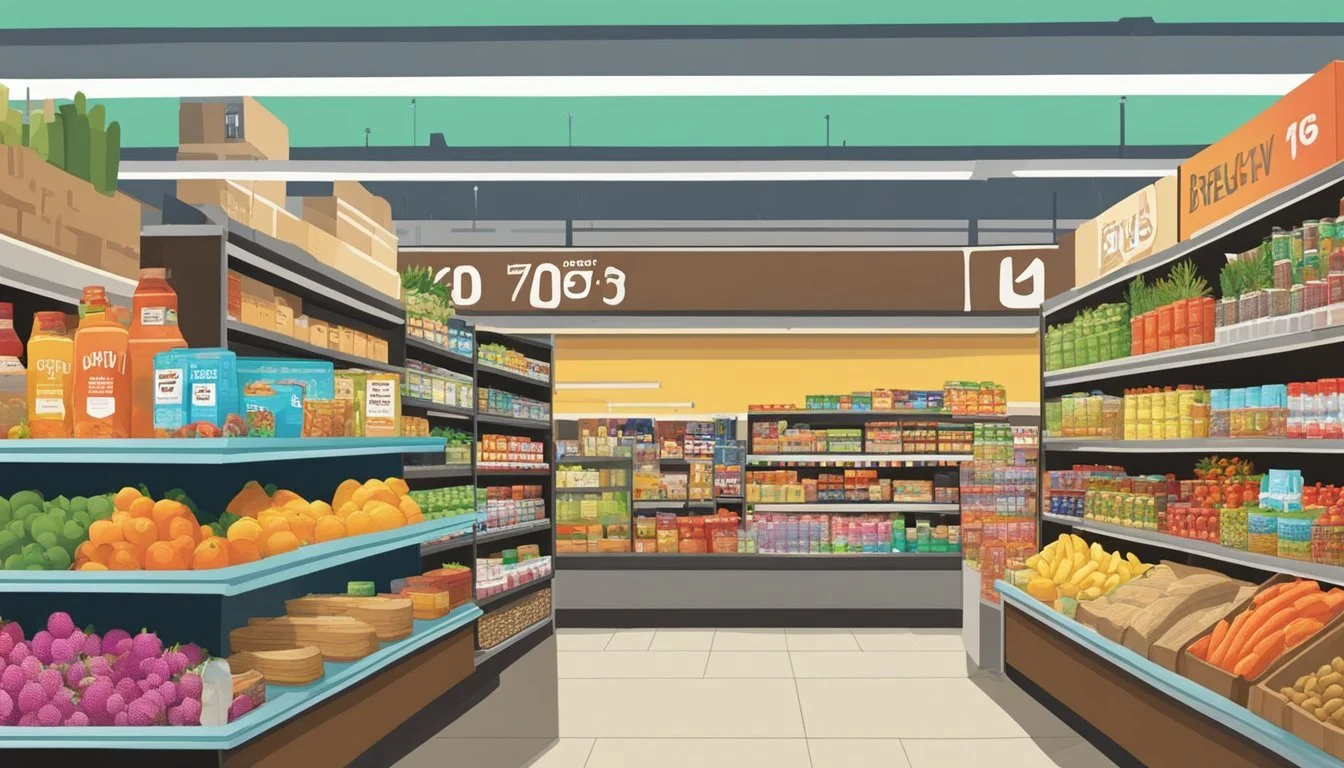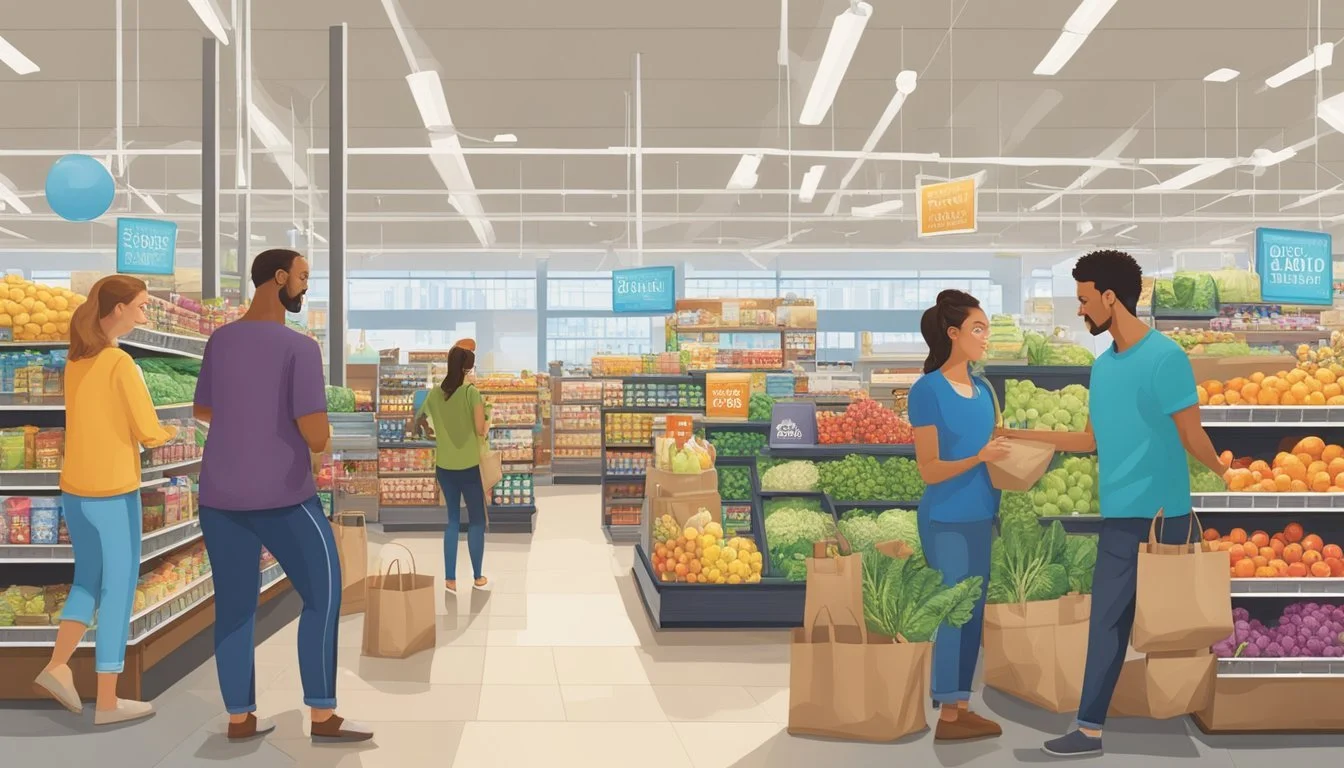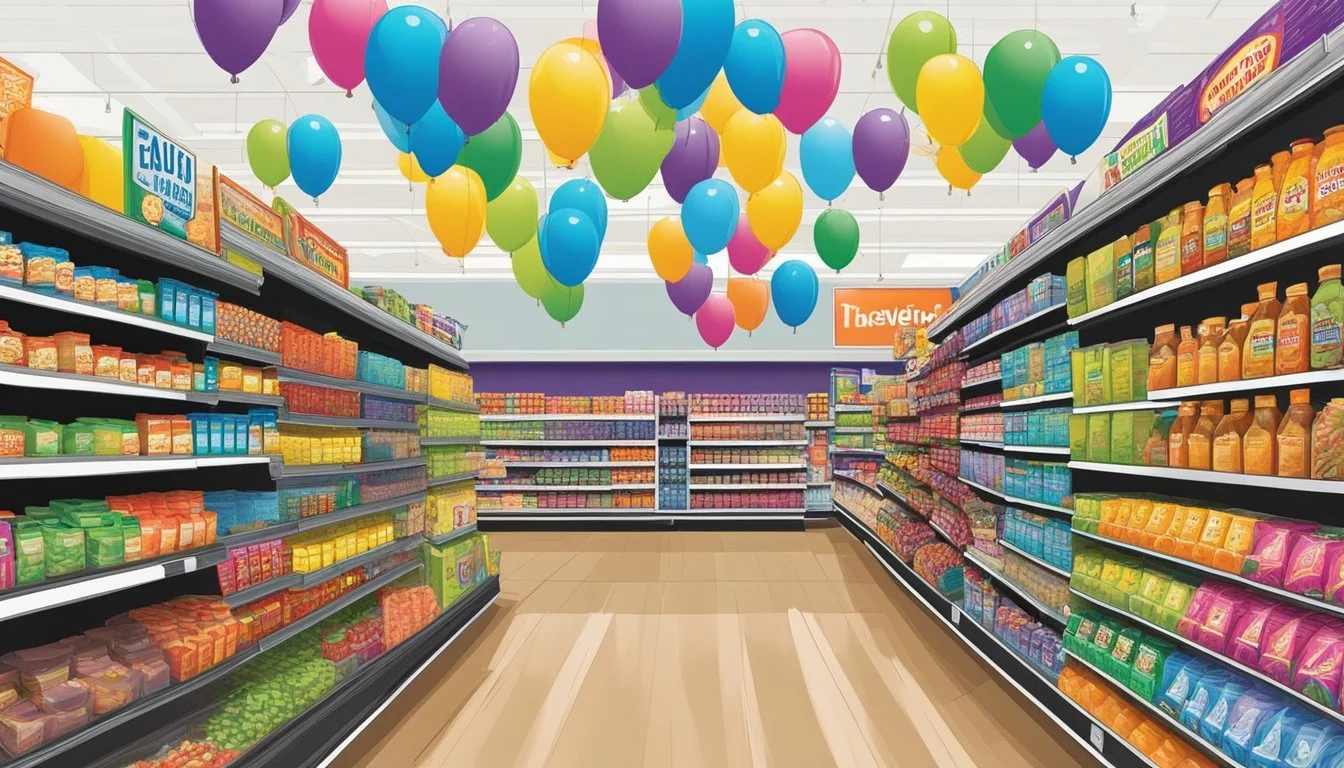Five Below vs Trader Joe's
A Comprehensive Comparison of Budget-Friendly Options
When it comes to grocery shopping, consumers are constantly on the lookout for stores that offer quality products at affordable prices. Five Below and Trader Joe's are two popular retailers known for their unique offerings and budget-friendly options. While Five Below primarily focuses on discount items across various categories, Trader Joe's has carved a niche in the grocery market with its curated selection of food products.
Trader Joe's generally offers lower prices on grocery items compared to traditional supermarkets, with savings typically ranging from 10% to 20%. The store's private label products, particularly its cheeses, wines, and specialty items, are renowned for their quality and value. Five Below, on the other hand, maintains a $5-or-less price point on most of its merchandise, including a limited selection of food and beverage items.
Both stores have loyal customer bases, but they cater to different shopping needs. Trader Joe's appeals to those seeking a diverse range of affordable groceries and unique food products, while Five Below attracts bargain hunters looking for inexpensive household goods, toys, and accessories. The choice between the two ultimately depends on individual shopping preferences and specific product requirements.
Five Below and Trader Joe's Overview
Five Below and Trader Joe's are popular retail chains with distinct market positions and brand identities. Both have experienced significant growth and expansion over the years, attracting loyal customer bases through their unique offerings and store experiences.
Market Position and Brand Identity
Five Below operates as a discount store chain targeting teens and pre-teens with products priced at $5 or less. The company focuses on trendy, fun items across various categories like toys, tech accessories, and room decor. Its colorful, vibrant stores create an exciting shopping atmosphere for young consumers.
Trader Joe's, on the other hand, is a specialty grocery store known for its curated selection of high-quality, innovative products. The chain has cultivated a strong cult following through its nautical-themed stores, friendly staff, and unique store brand offerings. Trader Joe's charming store design and unconventional approach to groceries set it apart from traditional supermarkets.
History and Expansion
Five Below was founded in 2002 by David Schlessinger and Tom Vellios in Pennsylvania. The company has rapidly expanded across the United States, with over 1,000 stores as of 2021. Five Below's growth strategy focuses on opening new locations in high-traffic areas and shopping centers.
Trader Joe's origins date back to 1958 when Joe Coulombe opened the first store in Pasadena, California. The chain was acquired by Aldi Nord in 1979 but maintains its distinct identity. Trader Joe's has grown steadily, with over 500 stores nationwide by 2021. The company's expansion approach is more measured, prioritizing careful site selection and maintaining its unique culture.
Product Assortment and Availability
Five Below and Trader Joe's offer vastly different product selections, catering to distinct consumer needs. Their assortments reflect their unique business models and target markets.
Variety and Exclusivity of Products
Five Below focuses on low-priced items across various categories, including toys, accessories, and some snacks. The store's inventory changes frequently, offering trendy products at $5 or less.
Trader Joe's, on the other hand, specializes in groceries. Its product range includes fresh produce, frozen foods, pantry staples, and prepared meals. The store is known for its curated selection, carrying fewer items than traditional supermarkets but ensuring quality and uniqueness.
Trader Joe's rotates products seasonally, introducing new items and discontinuing others regularly. This approach keeps the shopping experience exciting for customers.
Private Label vs Name Brands
Five Below primarily carries name-brand products at discounted prices. They offer a mix of well-known brands and lesser-known labels across their product categories.
Trader Joe's takes a different approach, with about 80% of its products being private-label. These Trader Joe's-brand products often come from the same suppliers as name brands but at lower prices.
The store's private-label strategy allows for greater control over quality and pricing. It also creates a sense of exclusivity, as these products are only available at Trader Joe's.
Unique Offerings and Seasonal Items
Five Below's unique offerings often include trendy gadgets, small electronics, and novelty items. Their selection changes rapidly to keep up with current fads and consumer interests.
Trader Joe's is renowned for its distinctive product lineup. The store offers:
Innovative frozen meals
Exotic spice blends
International snacks and treats
Affordable wines and craft beers
Trader Joe's excels in seasonal items, introducing products like pumpkin-flavored goods in fall and peppermint-themed treats during winter holidays. This rotation keeps customers coming back to discover new items.
The produce section at Trader Joe's, while smaller than traditional grocers, offers high-quality fruits and vegetables. Their bananas, often priced individually, have become a customer favorite.
Quality and Freshness
Five Below and Trader Joe's differ significantly in their product offerings and quality standards. These differences shape the customer experience and value proposition of each store.
Fresh Produce and Natural Products
Trader Joe's is renowned for its fresh produce and natural products. The store offers a wide selection of fruits and vegetables, including bananas, avocados, and strawberries. These items are typically sourced from reliable suppliers and undergo quality checks before reaching store shelves.
Five Below, in contrast, does not focus on fresh produce or perishable goods. The store's inventory primarily consists of non-food items and packaged snacks. This fundamental difference means that customers seeking fresh fruits and vegetables will find a much more suitable selection at Trader Joe's.
Organic and Sustainable Offerings
Trader Joe's has made significant strides in expanding its organic and sustainable product lines. The store offers a variety of organic vegetables, fruits, and packaged goods. Many items are labeled as non-GMO or sustainably sourced, appealing to health-conscious consumers.
Five Below does not emphasize organic or sustainable products. The store's focus on low-cost items often means that organic options are limited or non-existent. While Five Below may offer some natural snacks or beverages, its selection is not comparable to Trader Joe's in terms of organic and sustainable choices.
Trader Joe's also maintains strict quality standards for its private-label products, which make up a significant portion of its inventory. These items often match or exceed the quality of national brands at lower prices.
Price and Value Comparison
Five Below and Trader Joe's take different approaches to pricing and value. Both aim to provide affordable options, but their strategies and product ranges differ significantly.
Pricing Structure and Affordability
Five Below adheres to a strict pricing model, with most items priced at $5 or less. This makes budgeting simple for shoppers. Trader Joe's, on the other hand, offers variable pricing across its grocery selection. While not everything is under $5, Trader Joe's is known for competitive prices on many items.
Five Below focuses on non-perishable goods, toys, and accessories. Trader Joe's provides a full range of groceries, including fresh produce and prepared foods. This difference in product offerings impacts overall affordability for different shopping needs.
Cost-Effectiveness and Savings Opportunities
Trader Joe's often provides better value on grocery staples. A comparison with other supermarkets shows Trader Joe's prices are frequently lower, especially on store-brand items. Their produce is typically sold by package or item rather than by weight, which can lead to savings.
Five Below excels in providing low-cost options for household goods, party supplies, and seasonal items. Their $5-and-under model can result in significant savings on these non-grocery categories.
Both stores limit coupon use and sales, focusing instead on everyday low prices. This approach can lead to consistent savings without the need for extensive deal-hunting.
Comparison with Competitors
When compared to major retailers like Walmart and Costco, Five Below and Trader Joe's each have unique advantages. Five Below often beats larger stores on prices for small household items and accessories.
Trader Joe's competes well with budget grocery chains like Aldi. A recent price comparison of 48 basic items showed Trader Joe's totaling $150.32, while a typical grocery store came to a higher amount.
For produce, Trader Joe's pricing can be competitive but requires careful comparison. For example, their bananas are priced per piece rather than by pound, which may or may not be advantageous depending on size and quantity needed.
Shopping Experience
Five Below and Trader Joe's offer distinct shopping atmospheres that cater to different customer preferences. Their store designs, staff interactions, and checkout processes contribute to unique experiences for shoppers.
Store Ambience and Layout
Five Below embraces a vibrant, youthful aesthetic with bright colors and pop music. The store layout features wide aisles and clearly labeled sections, making it easy to navigate. Products are displayed on simple shelving units and hanging racks.
Trader Joe's, in contrast, cultivates a warm, inviting atmosphere. Wooden crates and hand-painted signs create a personal, down-to-earth feel. The store design often incorporates local touches, reflecting the neighborhood's character. Shelves are stocked with unique products, encouraging exploration.
Both stores prioritize cleanliness and organization, but Trader Joe's tends to have a more compact layout due to its focus on grocery items.
Customer Service and Staff Interaction
Five Below employs a young, energetic staff. Employees are usually available to assist customers but maintain a hands-off approach unless help is requested. The interaction is generally brief and focused on specific product inquiries or locations.
Trader Joe's is known for its friendly, knowledgeable crew members. Staff often wear Hawaiian shirts, adding to the store's relaxed vibe. Employees are trained to engage with customers, offering product recommendations and samples. This personal touch contributes to a community-oriented shopping experience.
Both stores emphasize customer service, but Trader Joe's takes a more proactive approach to customer engagement.
Checkout Process
Five Below typically features multiple checkout lanes to handle high customer volumes. Self-checkout options are available in some locations, catering to customers who prefer a quick, independent experience.
Trader Joe's maintains a more traditional checkout process. Registers are often adorned with decorative elements that match the store's theme. A ship's bell may be rung to call for assistance, adding a charming touch. Cashiers engage in friendly conversation while efficiently processing purchases.
Both stores strive for speedy transactions, but Trader Joe's emphasizes personal interaction during checkout. Five Below focuses on quick, streamlined service to move customers through efficiently.
Eco-Friendly Practices
Five Below and Trader Joe's have implemented various sustainability initiatives to reduce their environmental footprint. Both retailers have made efforts to address packaging and waste reduction, though their approaches differ.
Sustainability Initiatives and Packaging
Five Below has taken steps to minimize plastic packaging in its products. The company uses recycled materials in some of its packaging and encourages customers to recycle when possible. Trader Joe's has made more substantial progress in this area. They've eliminated over 4 million pounds of plastic from their stores and replaced plastic produce bags with compostable alternatives.
Trader Joe's also removed non-recyclable plastic and foil packaging from several products. The grocer now uses recyclable clamshells for many fresh items. Five Below, while making efforts, still relies more heavily on traditional plastic packaging for many of its products.
Reducing Environmental Impact
Trader Joe's has implemented comprehensive eco-friendly policies across its operations. They've increased their use of renewable energy sources in stores and distribution centers. The company also donates unsold food to reduce waste and partners with local food banks.
Five Below has focused on energy efficiency in its stores, installing LED lighting and optimizing HVAC systems. However, their sustainability efforts are not as well-documented or extensive as Trader Joe's.
Both retailers offer reusable bags to customers. Trader Joe's provides a wider variety of reusable options, including canvas totes and insulated bags. Five Below sells reusable bags as part of its product lineup but doesn't promote them as actively for grocery shopping.
Additional Services and Policies
Five Below and Trader Joe's offer distinct policies and services beyond their product selection. These retailers have unique approaches to customer satisfaction, promotional strategies, and community involvement that shape their overall shopping experiences.
Return Policy and Customer Guarantees
Five Below maintains a 30-day return policy for most items, requiring a receipt for refunds or exchanges. Exceptions apply to certain products like earrings and opened media. Trader Joe's takes a more lenient approach, accepting returns with or without a receipt for full refunds. They stand behind their products with a "we tried it, we like it" guarantee, allowing customers to return any item they're unsatisfied with, no questions asked.
Both stores aim for customer satisfaction but differ in their execution. Five Below focuses on clear guidelines, while Trader Joe's emphasizes trust and flexibility in their policy.
Promotions and In-Store Discounts
Five Below rarely offers traditional coupons or sales, as their $5-and-below pricing model is their primary draw. They do run occasional promotions like "Five Below Days" with special deals. Trader Joe's takes a similar approach, avoiding coupons and loyalty programs. Instead, they focus on consistently low prices and rotate seasonal items.
Both stores provide free samples, but Trader Joe's is particularly known for this practice. They often have a designated tasting station where customers can try new products. This sampling policy helps introduce shoppers to unique items and encourages spontaneous purchases.
Community Engagement and Brand Partnerships
Five Below engages with communities through their "Five Below Fund" charity initiative, supporting youth-focused organizations. They partner with popular brands to create exclusive merchandise, appealing to their young demographic.
Trader Joe's takes a more localized approach to community involvement. They often donate unsold, consumable food to local food banks. Their brand partnerships focus on creating unique private-label products, collaborating with various suppliers and brewing partners to develop exclusive offerings.
Both retailers prioritize giving back, but their methods differ. Five Below targets youth programs, while Trader Joe's concentrates on food-related charitable efforts and local community support.
The Verdict
Five Below and Trader Joe's cater to different consumer needs, making a direct comparison challenging. Five Below excels in offering a wide range of low-cost items across various categories, with most products priced at $5 or less.
Trader Joe's, on the other hand, focuses primarily on groceries and specialty food items. It offers unique, high-quality products at competitive prices compared to other supermarkets.
For budget-conscious shoppers seeking general merchandise, Five Below provides excellent value. The store's diverse selection includes items like clothing, accessories, home decor, and electronics.
Trader Joe's shines in the grocery department. It offers a curated selection of both everyday staples and gourmet products. Many customers appreciate the store's private-label items, which often match or exceed the quality of national brands at lower prices.
In terms of shopping experience, Trader Joe's typically provides a more upscale atmosphere. Five Below maintains a fun, vibrant environment that appeals to younger shoppers and bargain hunters.
Ultimately, the better store depends on individual needs. For groceries and specialty foods, Trader Joe's is the clear choice. For affordable general merchandise and impulse purchases, Five Below takes the lead.






